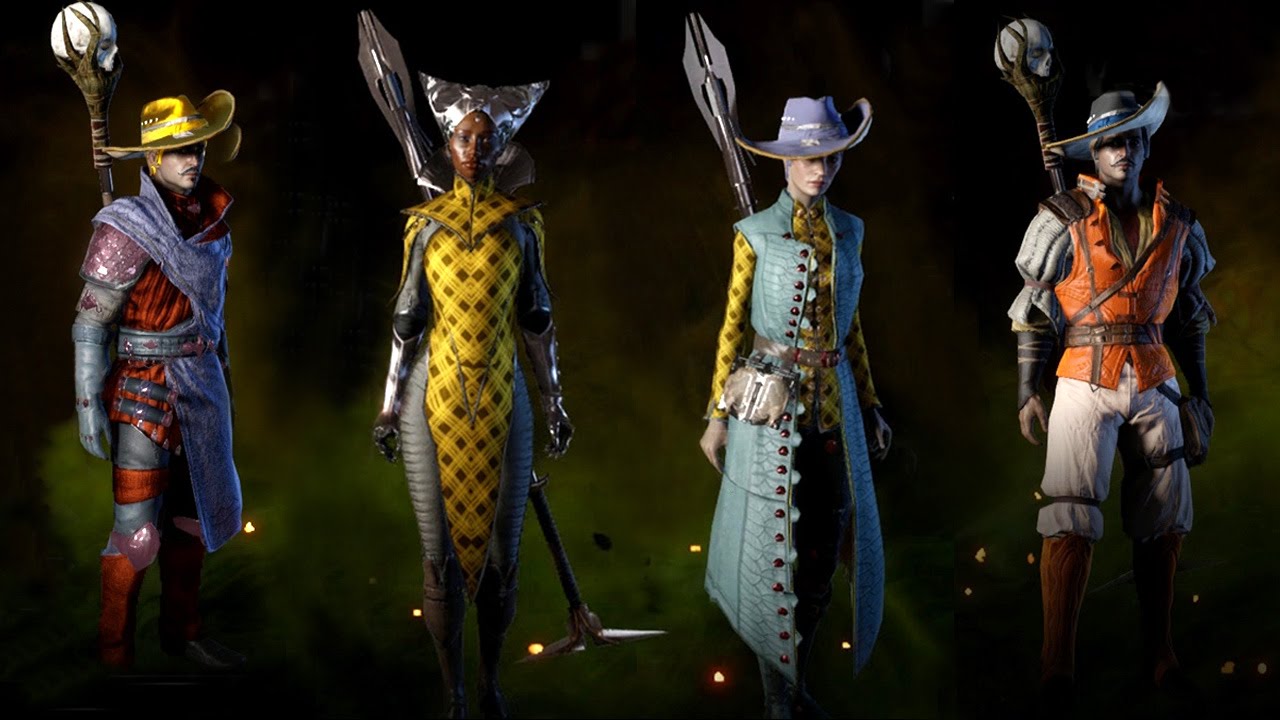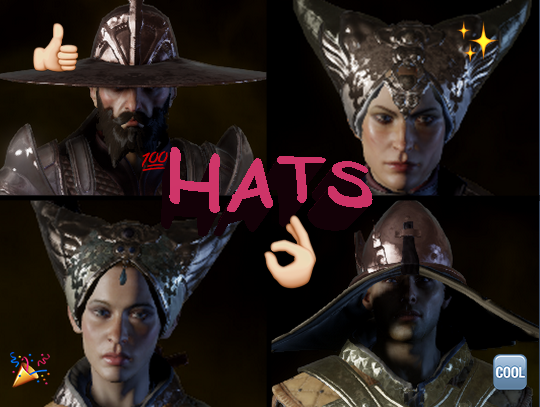Dragon Age: Inquisition - Before You Start
A subjective guide
Table of Contents

A mostly spoiler free list of suggestions for playing Dragon Age: Inquisition. (Don't look too closely at the pictures.)
Checklist
☑ Have questions about Inquisition? Narrative stuff? Mechanics? Do NOT google it. It's hard to find anything without major spoilers. Ask me first instead.
☑ Hope you installed this game to an SSD. The load times are not short even on my SSD.
☑ To load your state of Thedas into Inquisition:
- Sign into Dragon Age 2 with your Bioware/EA account, make sure it reads the final save game. (Hope you used your Dragon Age: Origins save when starting Dragon Age 2.)
- Then sign into Dragon Age Keep and make sure the state of your Thedas shows up correctly. You can make adjustments here if you want. When you're done you can export the world state to Dragon Age: Inquisition from this website.
Then you can sign into Inquisition and have the choice of loading the world state from the Dragon Age Keep when starting a new game. Phew!
☑ Make sure you have all the DLC installed. The DLC quality varies from very good to essential.
☑ Mods: I packaged some useful mods for you nice and tidy. I'll mention just one here.
Enhanced Camera: This brings the camera closer over the shoulder of your character. Think Dragon Age camera \(\to\) Mass Effect camera.
The rest fix annoyances Bioware wouldn't. Get the package at the above link, then do the following:
- Extract it somewhere. In the
Mod Managerfolder, there are twoSlimDX Runtimeinstallers. Install them. - Run
DAIModManager.exe. Set the path to the DA:Inquisition executable. Set the path to the 'mods' folder in the package. - Read the descriptions of the mods if you want. Make sure the DA:I patch 11 (or 12) is the first mod in the list. Hit merge. You're set.
- If the game crashes or bugs out, disable all mods in the manager except for the patch and the two
enhanced cameramods and merge again.
(The 'extra mods' folder has a few more mods you don't want at the start.)
☑ Steam controller > controller > Keyboard and Mouse. The tactical camera is a mess with a controller, but everything else works much better. The controller UI/HUD is way more immersive. If you find yourself using the overhead cam all the time, you should probably switch to kb&m.
(If you have a steam controller, set it to console controller emulation mode, then change the right touchpad to "mouse joystick" for trackball fun.)
☑ Options menu: Make the HUD contextual. You can turn off floating numbers too, but I usually leave a limited version on. Reduce the sound effects volume (relative to the dialog/music), they're too loud.
☑ Difficulty: When starting a new game, choose the custom difficulty option, this gives you a menu.
There are two viable options: Hard and Nightmare. The naming is aimed at games journos/casual players. Normal difficulty is no fun at all. Hard is really normal mode. It feels right at the beginning but the game is too easy from midway through. Nightmare is bumpy at the start but just right afterwards.
My suggestion is to start on Hard and switch to Nightmare about a third of the way through. I'm assuming you want to get into the combat, crafting etc, and not faceroll your way through like DA2. The game's going to be a long slog otherwise! See also the Tips section.
In the same menu, turn on some Trials. These make the experience more… spicy. When starting the game turn on only
Even Ground
After you have some experience with the game (level 9-10) you should turn on
Walk SoftlyBest trial! All spice, no cheese.Take It Slow: This is essential since you're usingEven GroundandWalk Softly.
For extra challenge, which is necessary later on, I recommend
Rub Some Dirt On It: You'll learn to plan encounters!Travel Light
☑ If you play an elf, your character will be dalish. Then you should add some vallasalin (dalish facial tattoos, like Merrill has) to your character's face at character creation. Trust me.
☑ On PCGamingWiki, there are some technical fixes for the game: make the cutscenes 60 fps instead of 30, etc. These can cause some game-breaking glitches at the start. Do these after finishing the prologue. (Or maybe don't do them at all if it doesn't bother you. I like my 60 fps.)
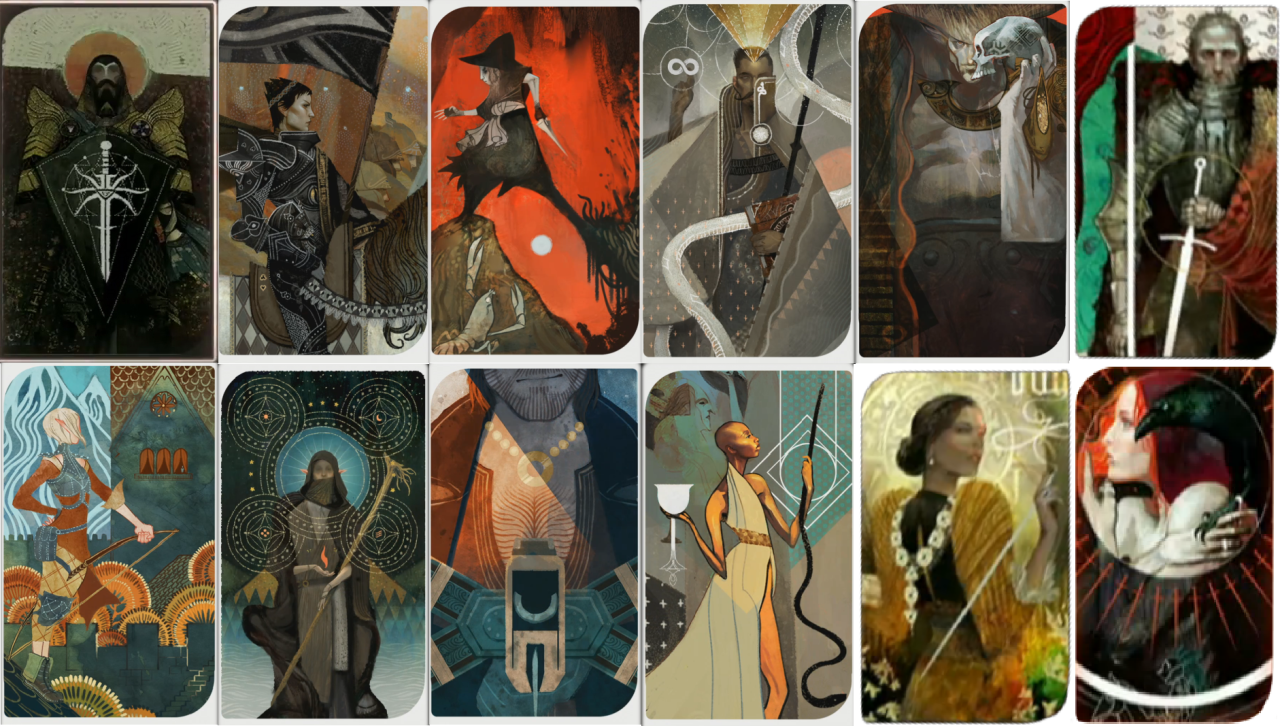
Figure 1: You like Tarot cards? DAI has a whole deck of them.
Character Creation
Race: Human, Elf, Dwarf or Qunari?
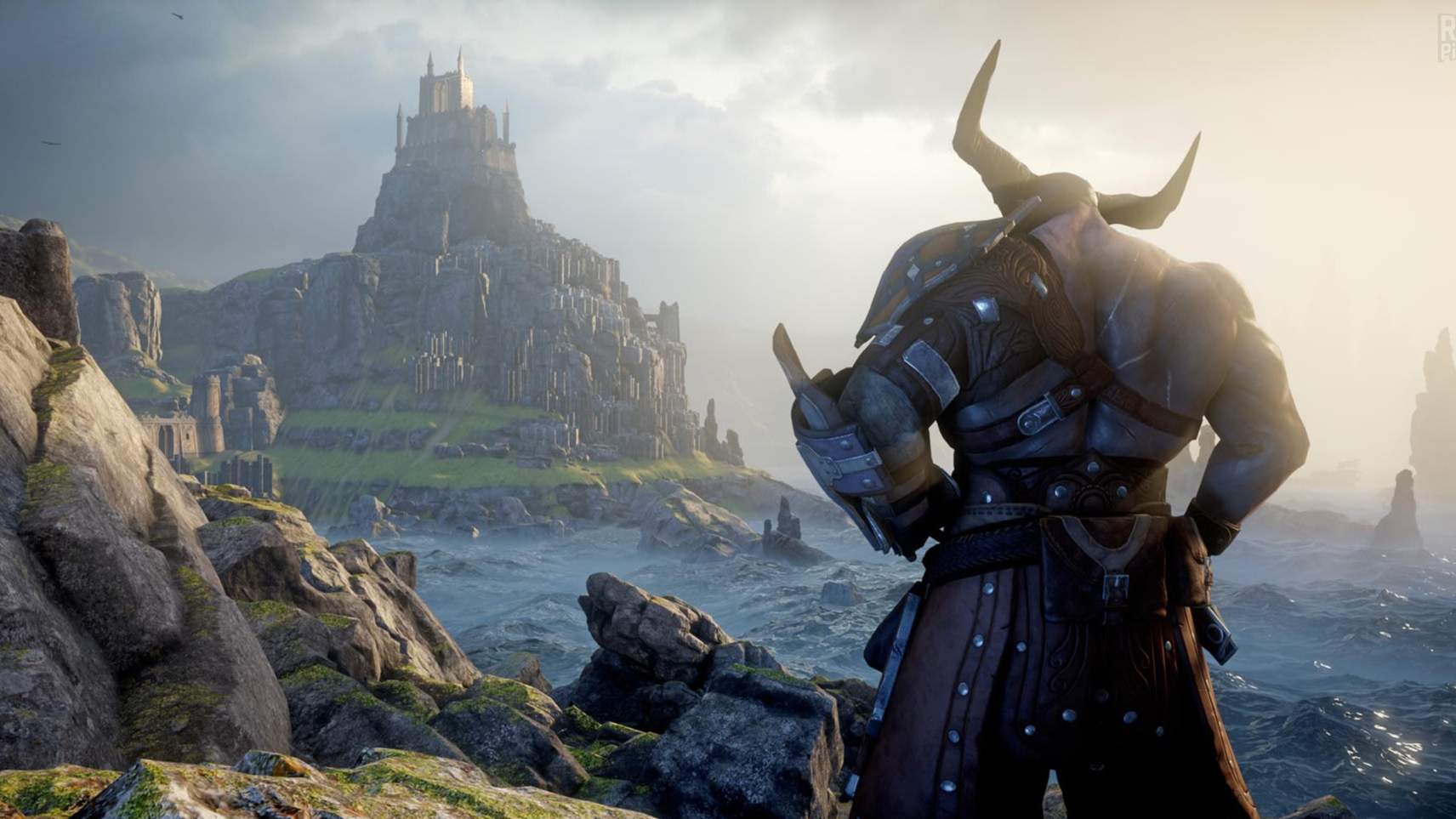
Figure 2: I see you there, gunning for Qunari right away. It's the horns, right?
This is the second most consequential choice. Since you're playing for MAXIMUM LORE, this would be my preferred order:
Elf > Human > Qunari
ELF
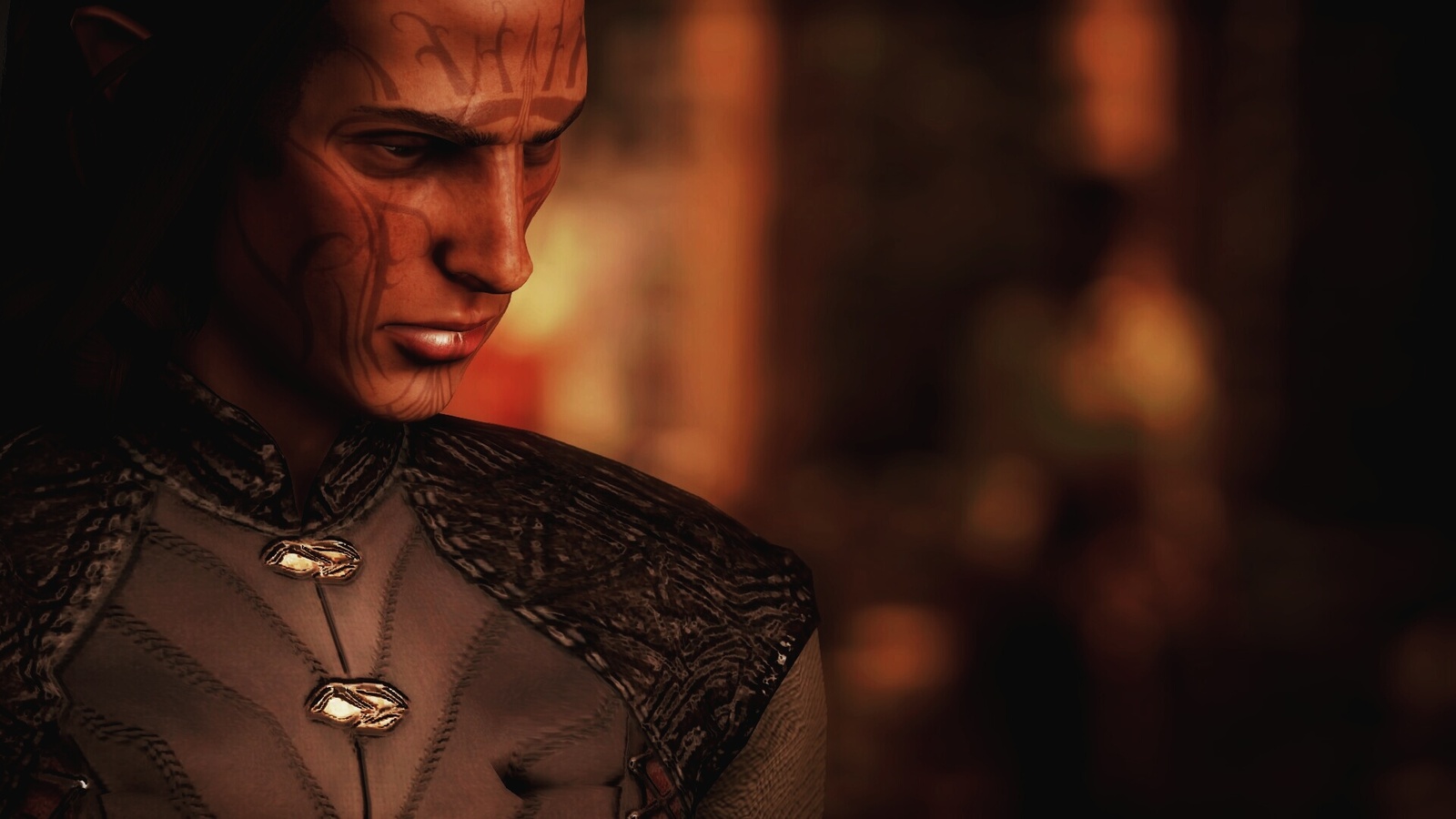 The elves are the most involved with the events of Inquisition, although this is hidden inside many layers of plot when the game starts. If you're invested in your character and you play as an elf, you might make some decisions at the end that you wouldn't otherwise. I found it to be the most interesting playthrough.
The elves are the most involved with the events of Inquisition, although this is hidden inside many layers of plot when the game starts. If you're invested in your character and you play as an elf, you might make some decisions at the end that you wouldn't otherwise. I found it to be the most interesting playthrough.
HUMAN
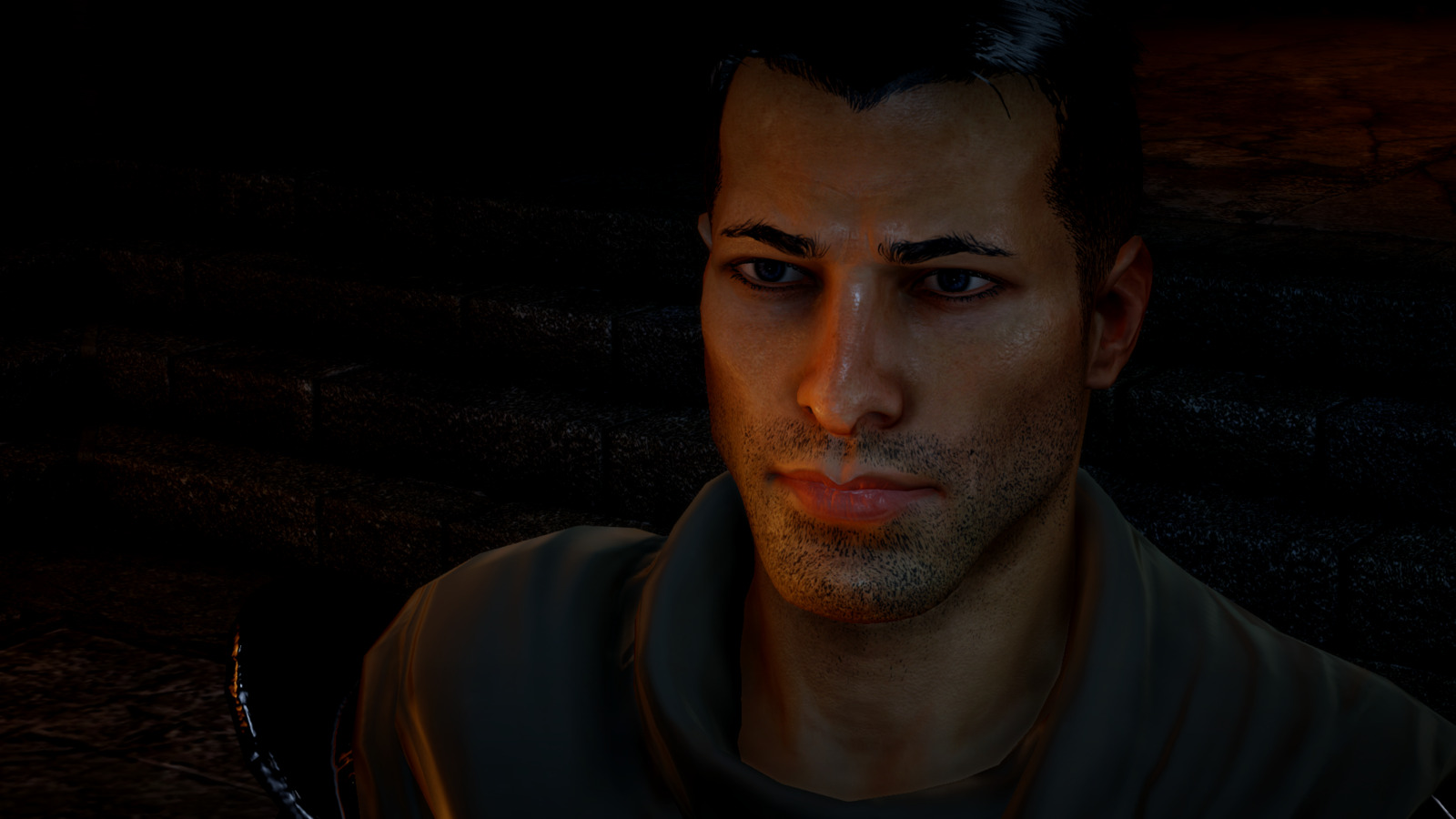 Human is Vanilla. It's fine, works the best for believability and immersion, because they clearly wrote the story around a human character and then added race-specific options. No complaints.
Human is Vanilla. It's fine, works the best for believability and immersion, because they clearly wrote the story around a human character and then added race-specific options. No complaints.
QUNARI
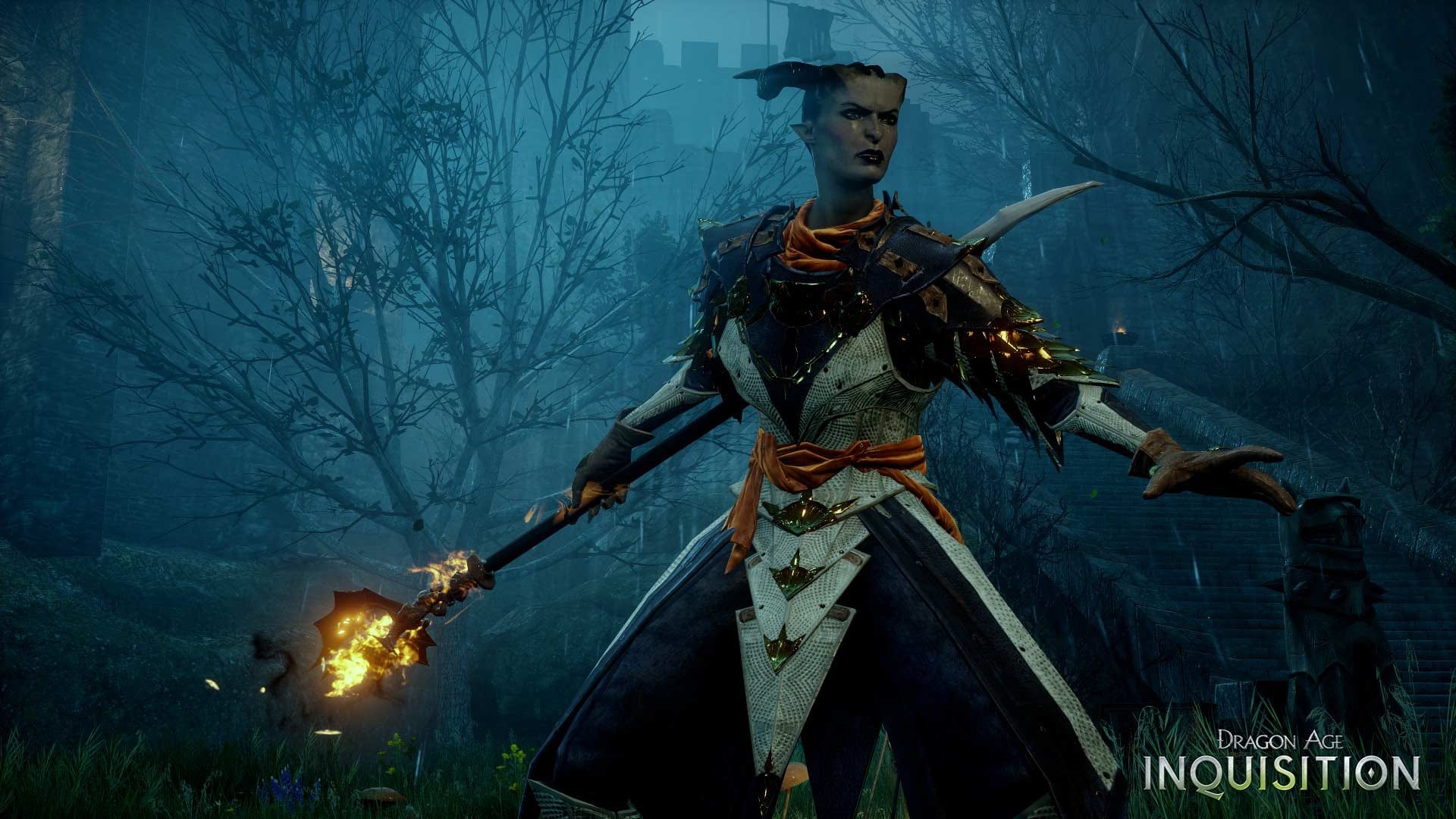 As a Qunari you're an outsider to everything that happens in the game. Yes, people do sometimes react to you being Qunari. Qunari react to you being Tal-Vashoth. It's all very funny. but it strains my credulity at many points in the game, like playing a mage in Kirkwall does. I think this option was added as a fan-pleaser and they didn't go all the way in modifying the story to suit your race.
As a Qunari you're an outsider to everything that happens in the game. Yes, people do sometimes react to you being Qunari. Qunari react to you being Tal-Vashoth. It's all very funny. but it strains my credulity at many points in the game, like playing a mage in Kirkwall does. I think this option was added as a fan-pleaser and they didn't go all the way in modifying the story to suit your race.
In any case you'll have a kick-ass Qunari companion in this game, the oppsite of Sten in temperament.
DWARF
I haven't done a playthrough with a Dwarf so I don't know where it fits. 🤷
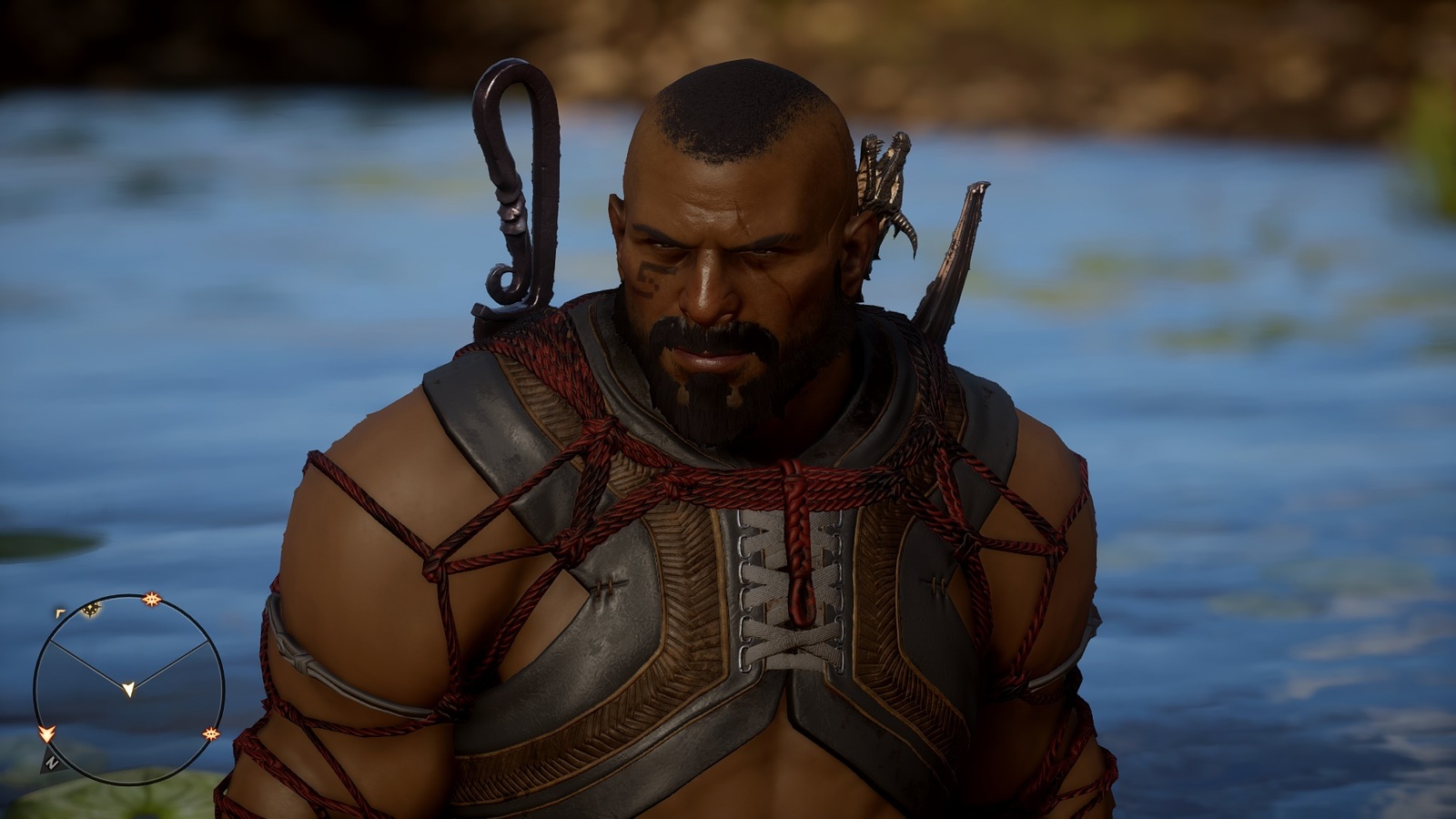 Dwarves aren't important to the events of Inquisition, so I'm guessing it'll be like playing Qunari.
Dwarves aren't important to the events of Inquisition, so I'm guessing it'll be like playing Qunari.
UPDATE: I started a playthrough as a dwarf. I'm playing Dwarf Joe Rogan:
 As I expected, it's a nice change from my other playthroughs but the Dwarf doesn't really fit in. There are many clearly human-centric dialogs left in. It's nice to get a different cinematic angle on the dialogs because of the height difference though.
As I expected, it's a nice change from my other playthroughs but the Dwarf doesn't really fit in. There are many clearly human-centric dialogs left in. It's nice to get a different cinematic angle on the dialogs because of the height difference though.
Male or Female
Both work well, but
- I think female VA 1 (Alix Wilton-Reagan) has the best performance. There are two voice options for each sex. One of the male VA's is decent too, but not as good.
- A couple of scenes seem to be clearly written with male characters as canonical.
Class: Warrior, Rogue or Mage?
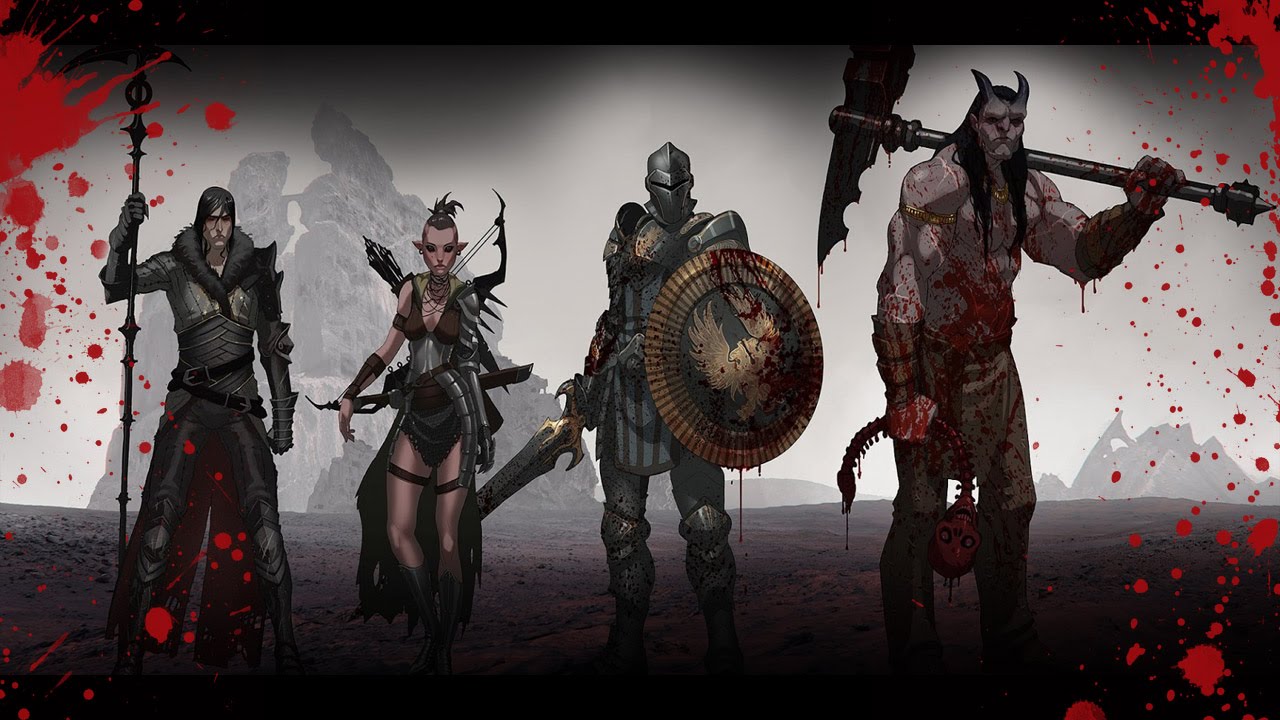
This is the biggest choice to make. Unlike choosing mage in DA 2, all work in the context of the story. There are some minor differences in how characters react to you, but reasons to prefer a class are mostly gameplay-related.
Rogue > Mage > Warrior
ROGUE
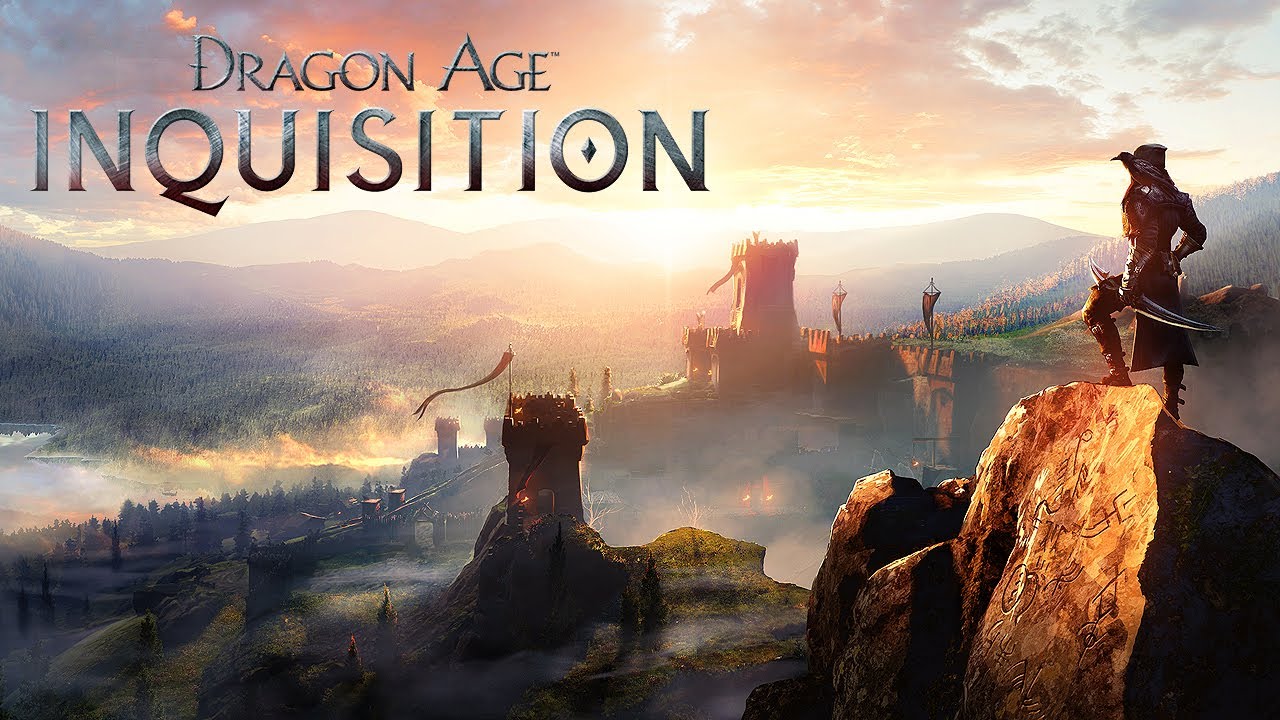
Figure 3: Unfortunately this is concept art. Your rogue can look like this though, minus the raven. Rogues have the coolest outfits (overcoats) in the game.
PROS
- Highest DPS, highest single target damage. Can melt bosses in seconds on nightmare with some preparation.
- This DPS means you'll always want a rogue in your party. Let's say you play a warrior. The AI has no idea how to handle rogues (worse than mages), so you'll end up babysitting the rogue companion instead of playing your main character. If you play a rogue you don't have this problem. Leave the warriors to the AI.
- Can mix it up with close combat (dagger) or ranged (bows), although not on the fly. You'll need to respec.
- Most mobile, can jump around the field easily. There's even a mass effect style vanguard charge.
- The rogue specializations are very versatile. AOE-spamming zero cooldowns attack machine? Check. Blanket the field in mines? Check. Crazy single target burst damage that can one-shot bosses? Check. Tank like a warrior or freeze foes like a mage? You can do any (but not all) of these as a rogue. I took down a high dragon in ~10 seconds on the nightmare difficulty playing solo as a rogue, although that was after a lot of planning.
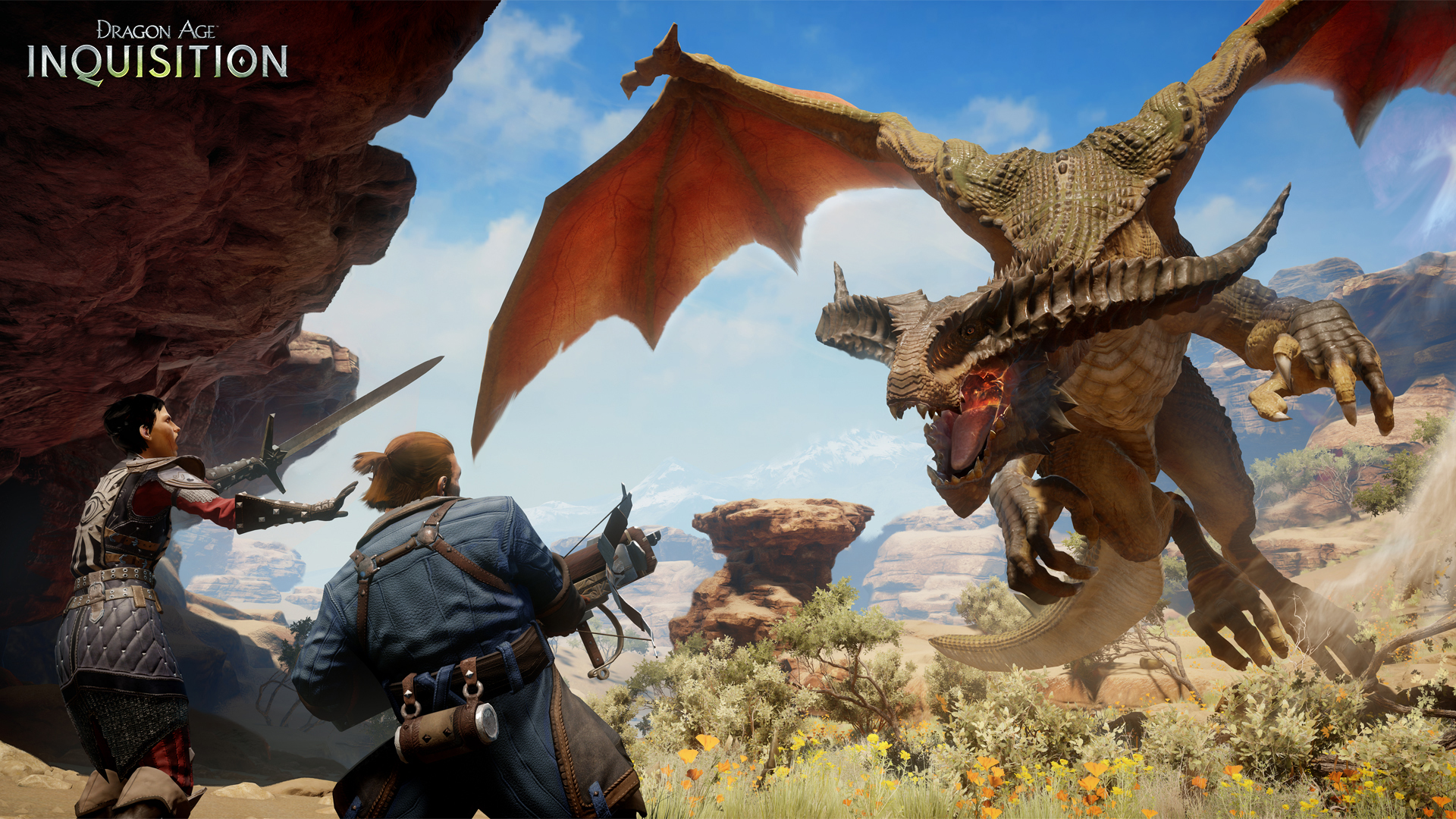
Figure 4: Varric and the seeker getting chummy
CONS
- Requires active control. Will get killed in seconds if you let AI handle your character. (Although see Survivability trap.)
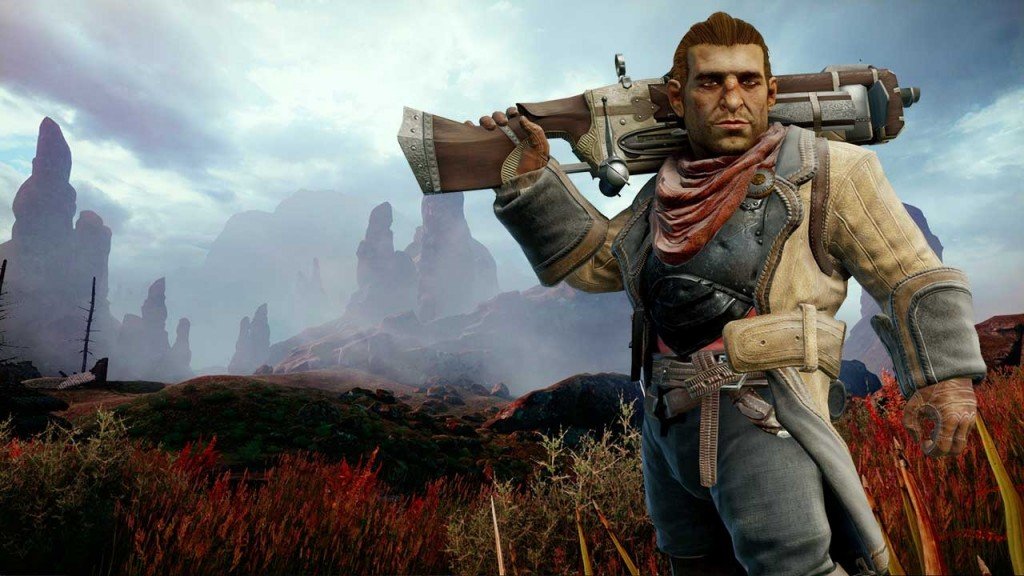
Figure 5: CON: If playing with a bow, it doesn't make sense to bring Varric along, unless you're actively built to synergize with him. The other rogue companions I don't care as much about.
- Only a couple of options for crowd control, even with the specializations.
- There's going to be lots of downtime in the first third of the game while you wait in stealth for your abilities to become available again. True for all classes but at least warriors and mages can continue to do basic attacks. Rogues will get killed if they do. (Mitigated somewhat by playing an archer.)
Archer vs Dual Wield
Ultimately this choice is a wash, but makes a big difference in the experience of the first third of the game. Also you can swap between the two at any time with a little gold.
In the early game, playing an archer is safer but less dynamic. (You only need to watch out for enemy archers.) The bursts are large, but cooldowns between bursts of damage are longer, you do a little less damage overall, and you will be just standing and shooting a fair bit. Some enemies jump around the field continuously, that's no trouble for an archer.
Playing a melee rogue is much faster paced and kinetic, you do more damage overall and flanking enemies is much easier. But the melee hitboxes are weird so you'll end up getting caught in stray swipes/swings and dying a lot. You have to chase mobile enemies around. You also can't afford to hand off control of your character to the AI and control one of the companions instead.
In the late game, both classes are pretty safe and hit like a truck. Archery is a lot more dynamic than before, you can spec like a "shotgun" archer who stays in close range and does a little melee on the side or vice-versa. The archer probably does more damage overall now. Choose based on the early experience description.
MAGE
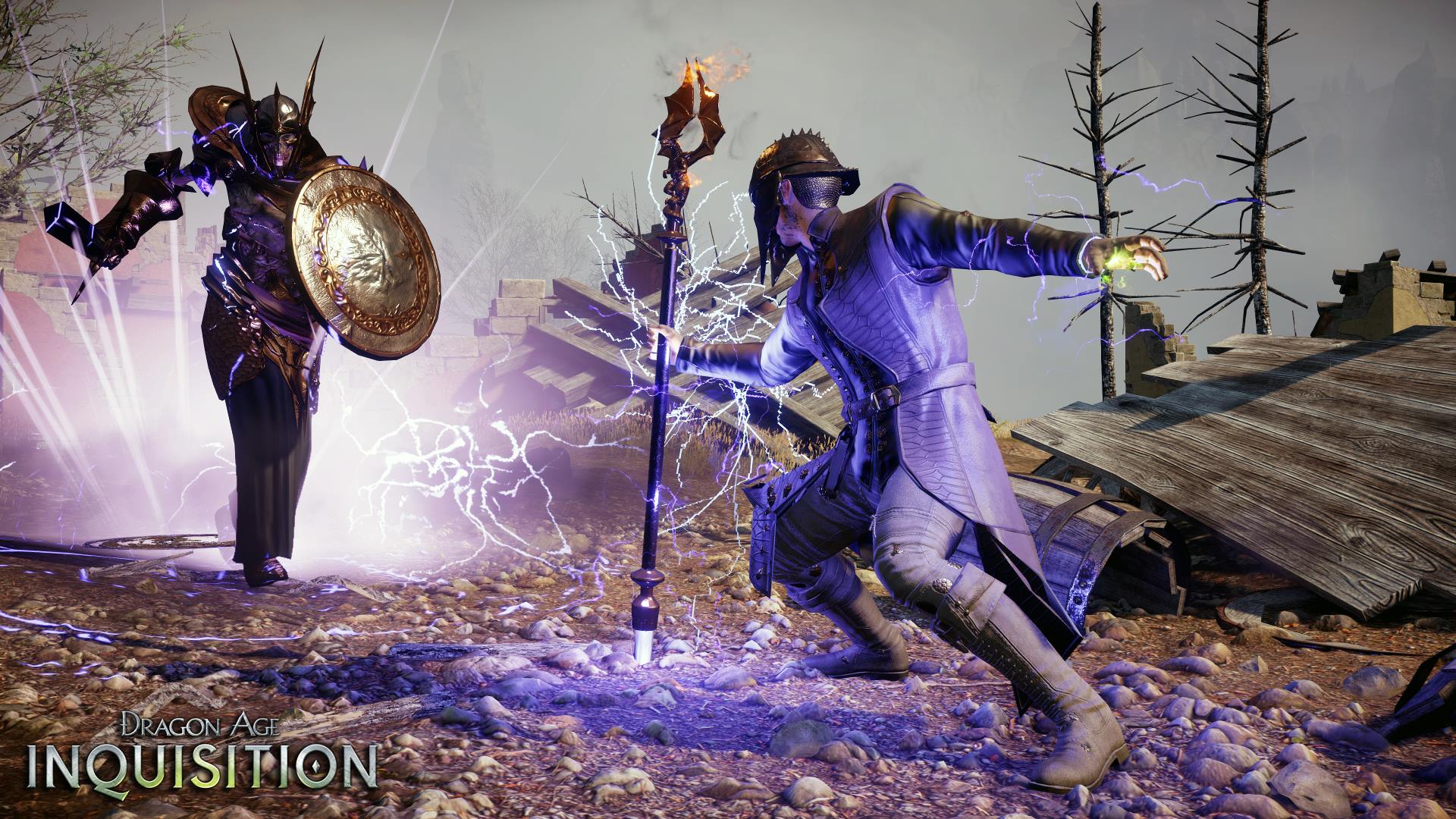
PROS
- Lots of crowd control skills
- Very, very flashy, especially on the frostbite engine. Uh, maybe this should be a CON:
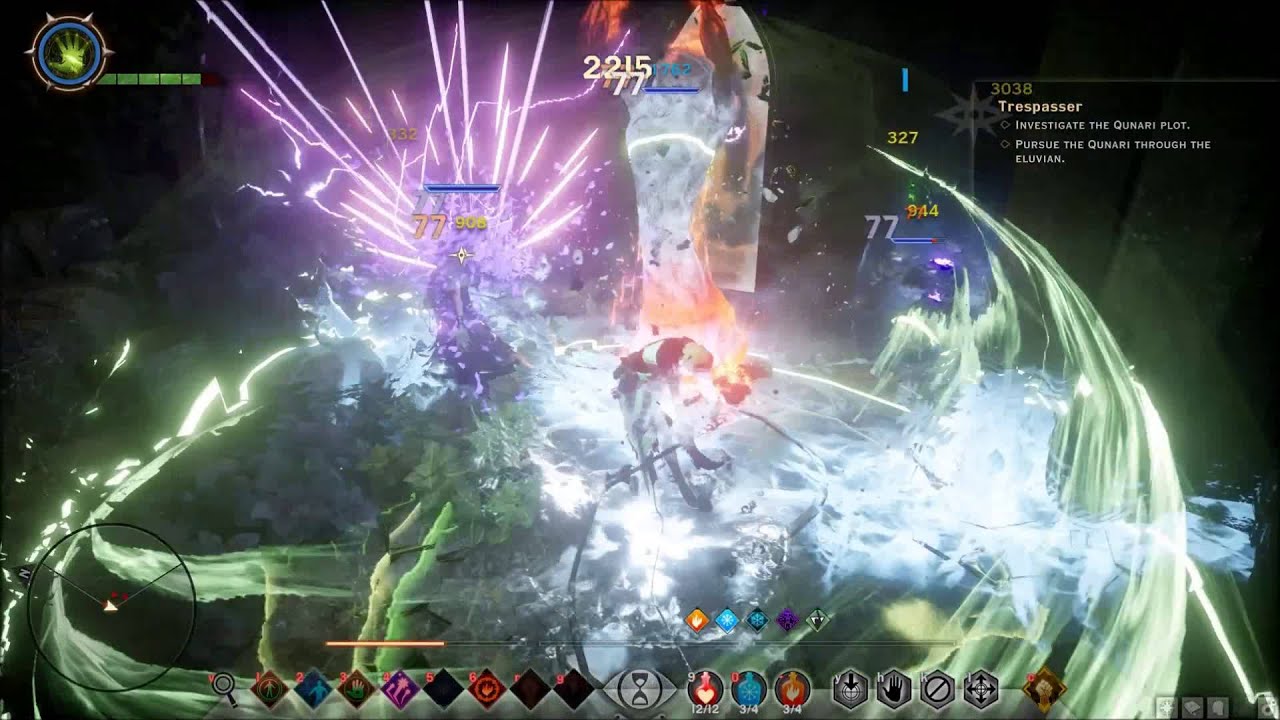
- Has a specialization that turns you into an unkillable close combat tank (with a spirit sword and everything). The Knight Enchanter can go toe-to-toe with dragons solo. However this specialization is defensive so combat becomes slow and attritional.
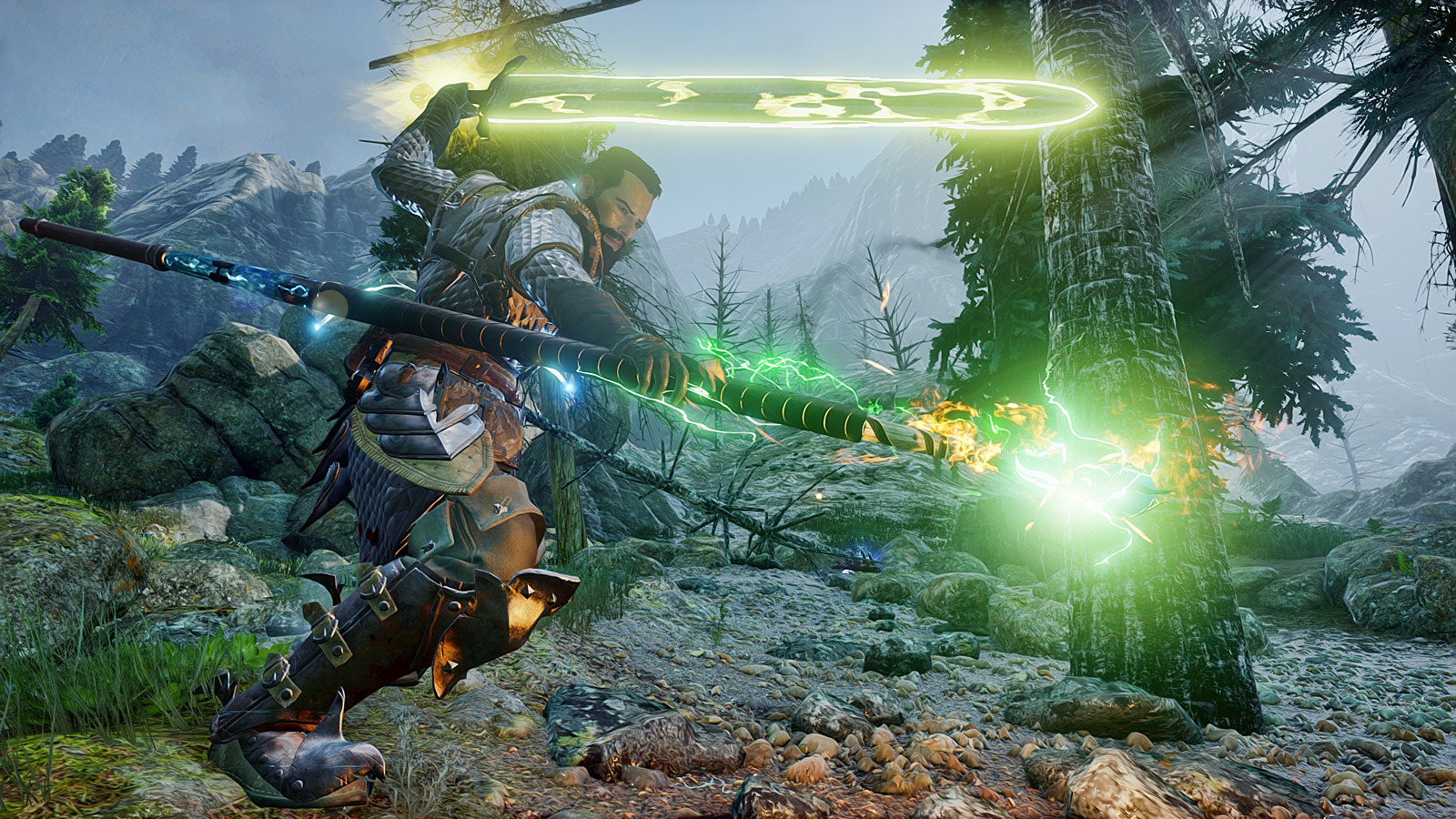
Figure 6: The Knight Enchanter: CQC mage
- Other specializations are standard mage fare; you get some very powerful aoes. Can throw mooks around like puppets.
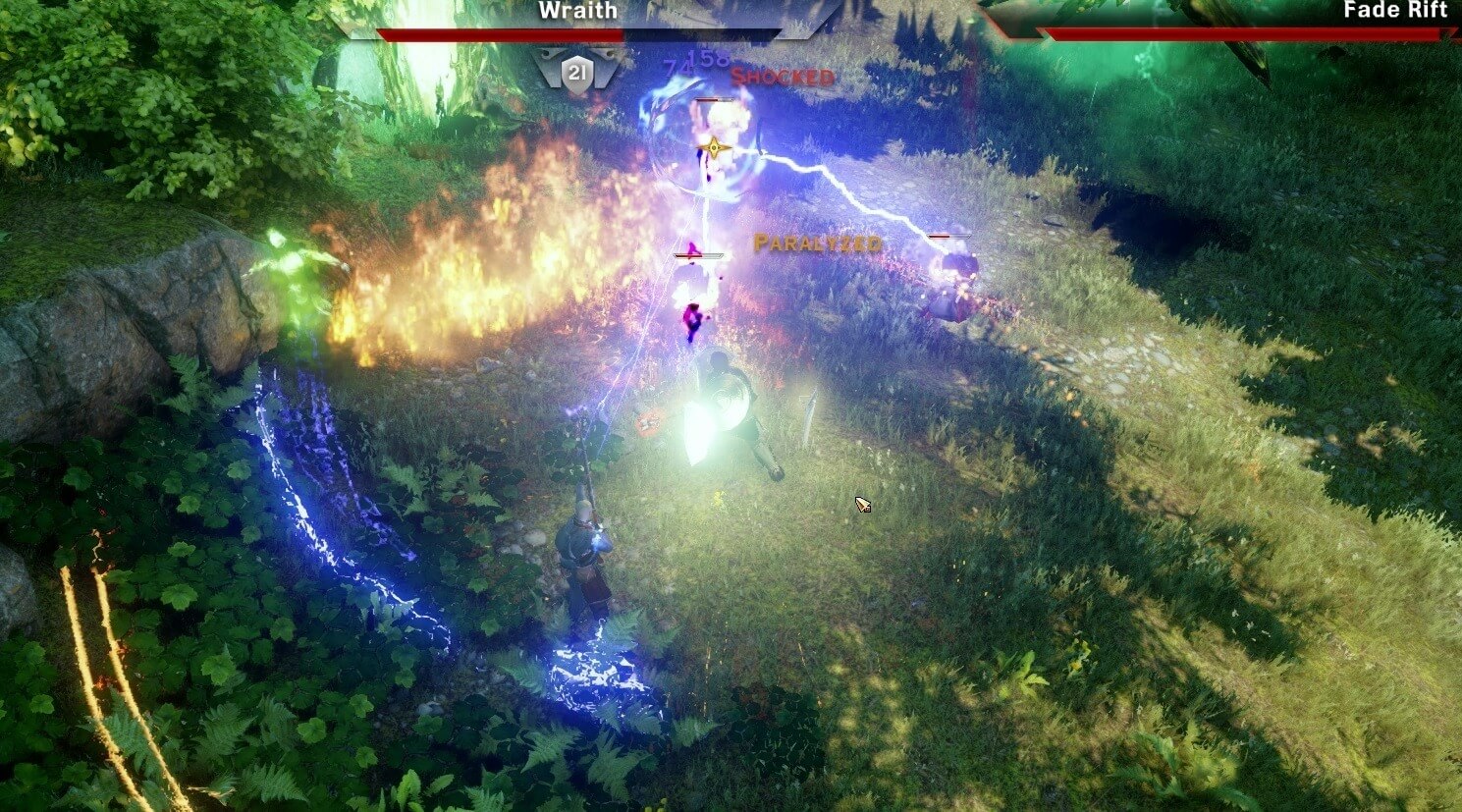
- Same as rogue: It's better you handle a mage than leave it to the companion AI. That said the rogue companion AI is the worst.
CONS
- Requires babysitting like the rogue. no chance of the AI using your spells efficiently.
- Might have trouble with bosses. Expect some of this:
- You'll have trouble if targeted by enemy archers. Can kill you easily if you're not careful, although not an issue from mid-game onwards (see Survivability trap).
- Two of your mage companions are interesting to quest with, there will be overlap with your skills.
- You'll never have enough skill slots. In inquisition you can only have 8 skills active at a time. This affects mages the most because their staff auto-attacks are pointless.
WARRIOR
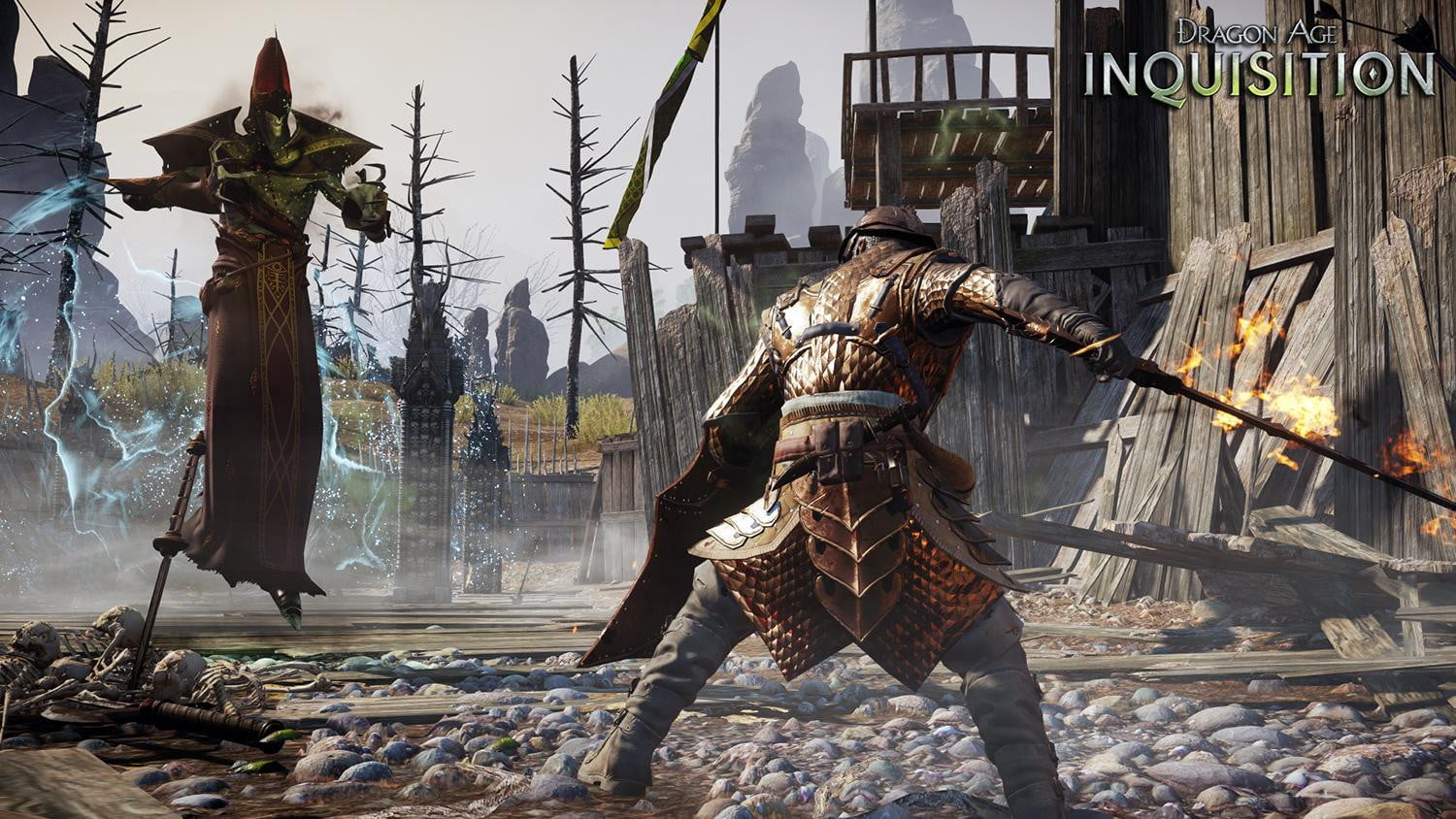
PROS
- Sword and shield warriors are set and forget. You can control the companion characters instead and mix it up.
- 2H warrior can do near rogue levels of damage but are about as durable (i.e. not very.)
- One specialization makes you pretty much invulnerable. Another ramps up damage significantly but loses chunks of health with each strike.
- Swinging a heavy axe feels much weightier than in Dragon Age 2. Satisfying thump.
CONS
- The best companion in the game for banter and interaction is a 2H warrior. If you're playing one too the party will be imbalanced and you might have trouble with fights.
- No crowd control to speak of.
- Not much mobility, although the play style is the inverse of the rogue: instead of pinballing between foes you can drag enemies to you.
- No ranged options, unlike rogue/mage.
- Fights will be more drawn out.
- The Survivability Trap: In general there's no reason to focus on survivability from mid-game onwards because you can easily craft stuff for rogues and mages that makes them as tanky as you want, with multiple layers of magical protection. Of course this comes at the cost of crafting stuff to do more damage instead. In any case this does take away the biggest advantage of playing warrior.
When to play the DLC
A question relevant only in the second half of the game. You can come back then and read this. There are three major pieces of DLC.
Trespasser
This is an expansion. It's set years after the main game, so you can't play it before. This completes the story of Dragon Age: Inquisition, and I found it to be the best thing about the whole series. It plays to the series' strengths in every way.
Jaws of Hakkon
This is a standalone adventure indirectly focused on the founding of the Chantry/Inquisition. You can go back and forth from the Jaws of Hakkon locations to the main game locations. You can dip into this lightly during the second half of the game, but it's best finished after you finish the main game. You'll need to be level 24 or higher to manage Hakkon, and besides you need something to do to fill the time gap between the main game and Trespasser.
The Descent
Also a standalone adventure, but best played in one go as a deep dive. Roughly focused on the ancient history of the Dwarves. Has some interesting pulling-the-rug type revelations. Play in one go when you feel a lull in the main story, but you probably want to be at least level 22.
Tips
I Will update this as you progress through the game.
General tips
- There are places and moments in this game where you'll want to walk, not run. Remember that you can walk! I love walking around in this game to take in the environment.
- Take your time with the early game. The late game has a different narrative flavor and you might regret rushing through the first part.
- Check the options menu for HUD/helmet options etc.
- I don't check my Journal/quest logs for the most part. You'll see why. Just check it once before embarking on any major story mission.
Combat tips
The tactics menu
- No detailed tactics in this game. In its place are two menus, skills and behaviors, where you can set what skills companions are allowed to use, whom they should protect/follow, etc. It doesn't work well, but you might like it because it's not ab initio like in DA2. Once you familiarize yourself with the interface, read this for tips on how to use it.
- Remember you can play through combat in the top-down view, like in Pillars of Eternity. Some fights early on require a delicate guiding hand. The top-down view also lets you order characters to hold a position. This is useful both to position mages and to get warriors to defend a position.
Combat on Nightmare difficulty
- If it seems like enemies have huge health bars on nightmare, don't drop it right away. Unfortunately Bioware balance their games in boring ways. If you use your party abilities correctly, hard difficulty ends up completely challenge-free. Here are some ideas for nightmare:
- Controlling the battlefield is the game. Position your ranged fighters on higher ground. Use warrior abilties that stun, mage abilities that corral foes, freeze or paralyze, and rogue abilities that put them to sleep. Positioning works; there are no bullshit mechanics like waves of enemies dropping in from the sky like in DA2.
- You can do tremendous damage to enemies with these status effects using the combo system. Look for the
+abilties with theDETONATORdescription. All classes have them. The companion AI uses these automatically on disabled enemies. - Each class has a means of self protection. Mages can cast Barrier, Warriors can build Guard and rogues can stealth. Judicious use of this is essential.
- Not every fight is worth getting into. Keep your distance or fall back to the camp if necessary.
- The DLC packs have weapons and schematics that will give you an edge on nightmare. You'll need it.
- I had a lot of fun crafting stuff in this game. You can make gear with really interesting combinations of properties. Crafting alone trivializes nightmare difficulty once you know what you're doing.
Miscellaneous
Offered without comment
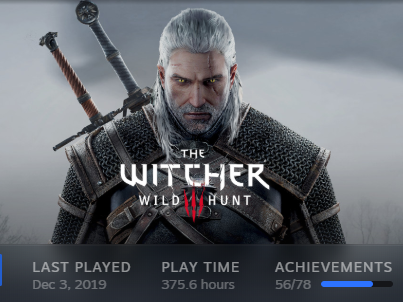
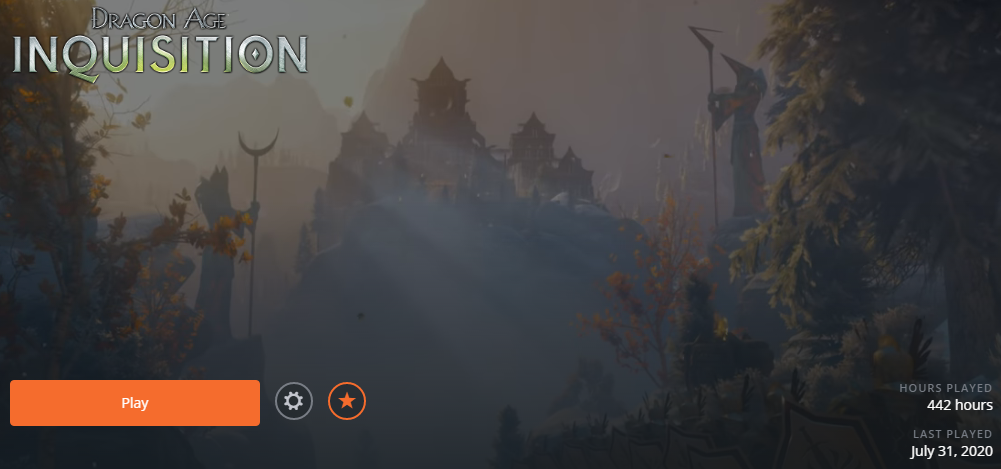
Do you like accessorizing, BTW?
